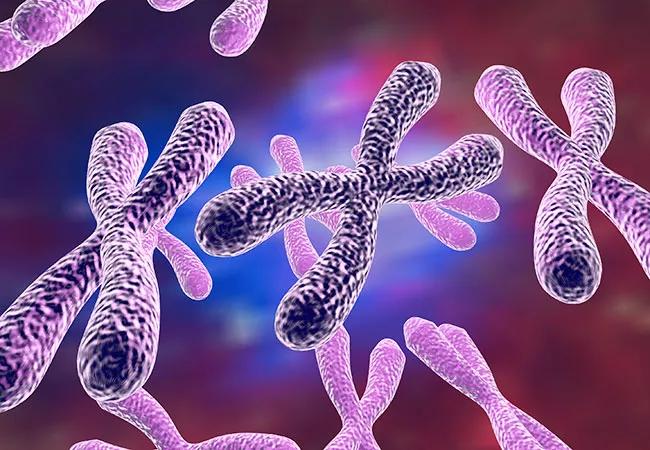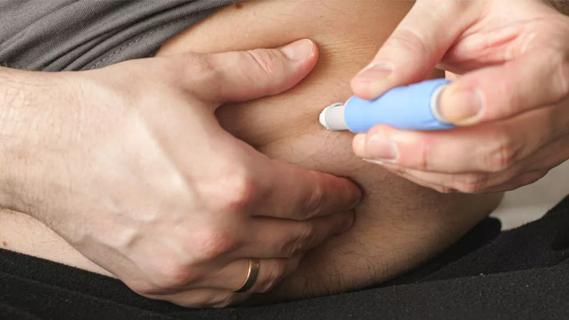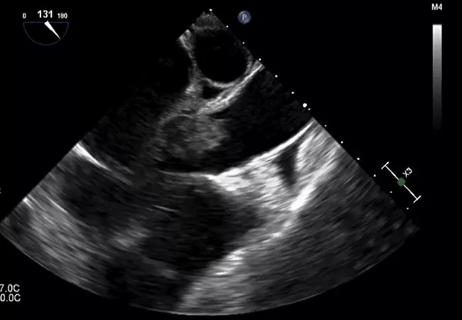$1.5 million grant to study the extracellular matrix

Suneel S. Apte, MBBS, DPhil, and his team at Cleveland Clinic’s Lerner Research Institute (LRI), including Belinda Willard, PhD of the LRI’s Proteomics and Metabolomics Core, have been awarded $1.5 million over three years to study the extracellular matrix (ECM) — the natural “glue” that holds tissues and organs together — and its role in the formation of the cardiovascular system and its diseases.
Cleveland Clinic is a non-profit academic medical center. Advertising on our site helps support our mission. We do not endorse non-Cleveland Clinic products or services. Policy
The grant, which was designed to fund out-of-the-box thinking, was awarded by the American Heart Association (AHA) and the Paul G. Allen Frontiers Group. “Traditionally, the AHA is looking for hypothesis-driven research ideas that extend observations on existing data, while the Paul G. Allen Frontiers Group is interested in funding projects at the frontiers of fundamental science,” says Dr. Apte. “This grant was a call for bold, ambitious research projects that are a blend of the two.”
Dr. Apte and his team won the grant with a proposal to cast a wide net over the ECM, first looking at the normal turnover of the ECM in the cardiovascular system and then more specifically at changes in the ECM that can damage the heart and vascular tissue. “This is how The Human Genome Project was completed,” he says. “Instead of looking at one gene at a time, those researchers decided to identify all of the genes in every chromosome first and then look at their functions.”
Dr. Apte uses an architectural analogy to describe the ECM, the inanimate material found between and around cells. The ECM anchors cells and influences every aspect of their behavior and fate. “If our body is a building,” he says, “then the cells are the bricks and the ECM is the mortar that holds the cells together. But unlike mortar, the ECM is very dynamic: It is constantly being broken down and rebuilt by the cells.” And just as cells are distinctive, the ECM is distinctive, too. “It has specific physical properties depending on where it is found in the body — be it skin, bone, cartilage or internal organs.”
The process of ECM breakdown and repair is poorly understood, he continues, “but we know that it is critical that there be an optimal amount of ECM around the cells. Too much, too little or the wrong type of ECM is bad for the health of the tissue, and can cause excessive destruction or buildup of tissue, as is seen in fibrosis.”
The team will use the new technology of mass spectrometry to study the breakdown of proteins found in the cardiovascular ECM. One focus will be ADAMTS proteases, metalloproteinases produced by cells that attack the ECM, several of which were discovered in Dr. Apte’s laboratory. “ADAMTS proteases are like molecular scissors that snip at the ECM in very specific places,” says Dr. Apte. “The cells control very carefully where the ECM is cut. It is a well-regulated process for normal maintenance — except when genetic mutations or diseases are present.”
The team expects to work with approximately 40 normal and diseased human aortas and a similar number of normal and mutant mouse heart samples, analyzing them in depth. “We will be working closely with the cardiothoracic surgeons at Cleveland Clinic led by Eric Roselli, MD, who will provide the excised aortic tissue for our research and help us define what we are seeing and how the new information we gather can be used clinically,” he says. “Ultimately, we hope our approach will lead to novel disease markers and targets for drug development.”

OMT may be right for some with Graves’ eye disease

Perserverance may depend on several specifics, including medication type, insurance coverage and medium-term weight loss

Integrate climate-related health information and counseling into your practice

Physicians discuss a specific case example, and PICC pros, cons and alternatives

A snapshot of the 2020 GINA report

A review of available interventions

Abstinence from combustibles, dependence on vaping

An historical view of the disease